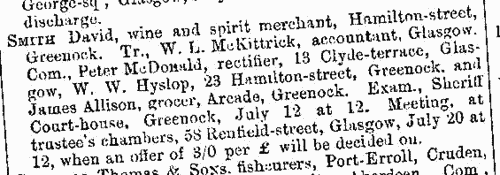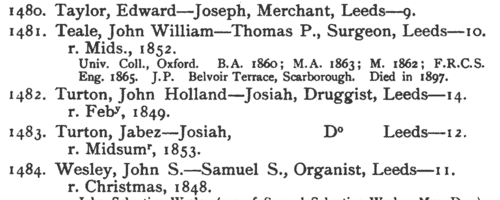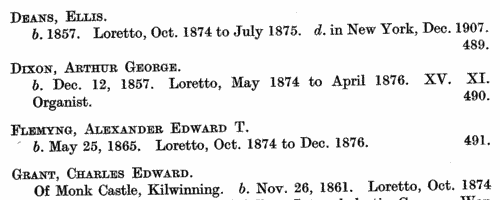Our indexes include entries for the spelling roberts. In the period you have requested, we have the following 4,727 records (displaying 3,551 to 3,560):
Partnerships Dissolved
(1881)
Dissolution of trading partnerships, or removal of a partner from a business, in England and Wales, July to September 1881 | Sample scan, click to enlarge

|
Partnerships Dissolved
(1881)
Dissolution of trading partnerships, or removal of a partner from a business, in England and Wales, October to December 1881 | Sample scan, click to enlarge

|
Partnerships Dissolved
(1881)
Dissolution of trading partnerships, or removal of a partner from a business, in England and Wales, January to March 1881 | Sample scan, click to enlarge

|
Scottish Debtors, Insolvents and Bankrupts
(1881)
Protests on Bills of Exchange, Sequestrations and Cessio Bonorums in Scotland, July to September 1881 | Sample scan, click to enlarge

|
Scottish Debtors, Insolvents and Bankrupts
(1881)
Protests on Bills of Exchange, Sequestrations and Cessio Bonorums in Scotland, October to December 1881 | Sample scan, click to enlarge

|
Women Students Entering Stockwell Teacher Training College
(1881)
This list, revised to August 1908, gives the student's name and her then address (if known); the Remarks column indicates whether she left the course early; left the profession; went abroad; died; became a headmistress; and/or married: married name is often given. | Sample scan, click to enlarge

|
 Army commissariat and transport departments in Egypt
(1882) Army commissariat and transport departments in Egypt
(1882)
The war medal roll for the Egyptian campaign of 1882 is annotated to show those men actually present at Tel-el-Kebir, and thereby also entitled to the Tel-el-Kebir clasp. In addition, there follows an almost duplicate roll of men entitled to the Bronze Star granted by the Khedive of Egypt in recognition of the campaign. | Sample scan, click to enlarge

|
Bankrupts, Assignees, Trustees and Solicitors
(1882)
Bankruptcy notices in England and Wales. | Sample scan, click to enlarge

|
Boys entering Leeds Grammar School
(1882)
The admission books for Leeds Grammar School from 1820 to 1900 were edited by Edmund Wilson and published in 1906. The series of registers is almost complete for the period, there being in addition admission registers for the Lower (or Commercial) Department from 1856 to 1865, and lists of boys in the school in 1856, and in the Commercial Department in 1861. The entries are arranged by date or term of admission: a sequential number is given first, then surname, christian name, and, after a dash, father's christian name, occupation, and address; another dash, and then the age of the boy at admission, and often his year of leaving (with the abbreviation r. for 'removed' or 'left'). r.* means left without notice; (o) or S. or Stranger or Foreigner indicates a boy not on the foundation. The editor was unable to divine the meaning of the abbreviation (Q) or the asterisks prefixed to most entries in 1856 to 1860, but dutifully copies them into the text. In smaller type he then proceeds, where possible, to add some information about the boy's subsequent career. | Sample scan, click to enlarge

|
Boys entering Loretto School
(1882)
The Reverend Dr Thomas Langhorne, who came to Musselburgh in Midlothian as an Episcopalian Church clergyman, established a small school for boarders and day scholars at Loretto House, so called because the grounds contained the ruins of the mediaeval chapel of St Mary of Loretto. To celebrate the centenary of the school in 1925, a second edition of the school register was published, edited by A. H. Buchanan-Dunlop. Relatively little was known of many of the earliest scholars, but from 1835 onwards the register generally gives full name, in capitals, surname first; date of birth; period of time at Loretto; a brief biography; date of death; whether brother of any other boy in the register; and a sequential number. | Sample scan, click to enlarge

|
Research your ancestry, family history, genealogy and one-name study by direct access to original records and archives indexed by surname.












